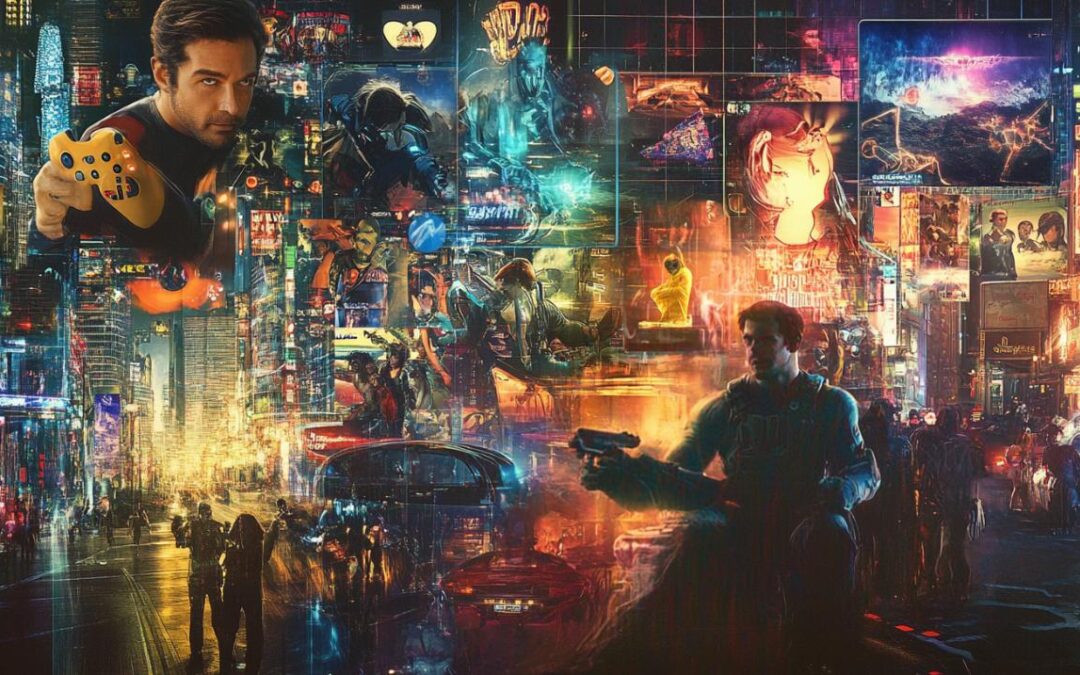The world of interactive entertainment has undergone a remarkable transformation over recent decades, evolving from simple pixelated adventures into complex narrative experiences that rival traditional cinema and theatre. At the heart of this revolution lies the contribution of talented performers who lend their voices, movements, and emotional depth to digital characters. These individuals have become instrumental in shaping modern society trends and lifestyle, influencing not only how we consume entertainment but also how we perceive digital storytelling as a legitimate art form. As gaming continues to permeate everyday culture, the role of these artists has expanded far beyond mere dialogue delivery, encompassing full-bodied performance capture and nuanced character development that resonates with millions worldwide.
The Evolution of Performance in Gaming: From Voice Work to Full Performance Capture
In the early days of interactive entertainment, character dialogue was often limited to text on screen or rudimentary sound bites. The iconic Dragon’s Lair from 1983 marked a significant milestone by incorporating full-motion video with recorded dialogue, setting a precedent for future developments. As technology advanced, so too did the expectations of audiences who began to crave more immersive and emotionally engaging experiences. Voice-over services became a cornerstone of the industry, with performers tasked with breathing life into characters through vocal expression alone. English-language performances, both in American and British dialects, dominated the market, though the demand for multilingual voice-over work has grown exponentially, encompassing languages from German and French to Arabic, Chinese, and Japanese. This expansion reflects the global reach of gaming and the necessity for localisation services that include translation, transcription, and subtitling to ensure accessibility across diverse audiences.
The Transition from Traditional Voice Acting to Motion Capture Technology
The shift from traditional voice acting to motion capture technology represents one of the most profound changes in the gaming industry. Initially, performers would record dialogue in isolation, often without the context of the full narrative or the physicality of their characters. However, the advent of motion capture technology revolutionised this process by enabling actors to use their entire bodies to convey emotion and intention. This technique, sometimes referred to as digital make-up by industry pioneers such as Andy Serkis, captures every subtle movement and facial expression, translating them into digital form with astonishing accuracy. The result is a level of realism that was previously unattainable, allowing players to connect with characters on a deeper emotional level. This technology has also opened doors for greater inclusivity, as it diminishes the impact of typecasting by allowing performers to embody roles regardless of physical appearance, disability, race, or gender. The integration of real-time rendering techniques has further enhanced character realism, while artificial intelligence tools have improved audio quality and enabled more immersive vocal performances. These advancements have elevated the standard for voice-over talent, demanding a versatile skill set that includes vocal modulation, pitch variation, emotional expression, and improvisation skills.
How thespians are revolutionising character development in interactive media
The involvement of accomplished thespians in video games has fundamentally altered the landscape of character development within interactive media. No longer content with superficial portrayals, game developers now collaborate closely with actors, directors, and writers to craft multifaceted characters that resonate with audiences. This collaborative approach ensures that each character possesses a distinct personality, backstory, and emotional arc, much like those found in traditional theatre or film. The use of performance capture technology allows actors to fully inhabit their roles, employing body language and non-verbal communication to convey silent communication cues that enrich the narrative experience. The result is a seamless blend of digital artistry and live performance that captivates players and fosters a deeper sense of engagement. High-profile projects such as Death Stranding have showcased the potential of celebrity voice actors to add gravitas and depth to gaming narratives, attracting mainstream attention and legitimising the medium as a serious art form. This trend has also led to the creation of bespoke scripts and custom soundscapes tailored to the unique demands of each project, further emphasising the importance of skilled performers in shaping the gaming experience. As the industry continues to grow, the demand for versatile talent capable of navigating both vocal and physical performance will only increase, solidifying the role of actors as essential contributors to the creative process.
Gaming as Legitimate Storytelling: The Cultural Shift in Perception and Artistic Recognition

For many years, video games were dismissed by cultural critics as frivolous distractions lacking the depth and sophistication of traditional art forms. However, the past two decades have witnessed a significant shift in perception, with gaming now recognised as a legitimate medium for storytelling and artistic expression. This transformation has been driven in large part by the contributions of talented performers who have demonstrated that interactive media can deliver narratives as compelling and emotionally resonant as those found in literature, film, or theatre. The integration of advanced audio editing, sound design, and dubbing services has ensured that every aspect of the audio experience is meticulously crafted to support the narrative. Additionally, visual effects and video editing have elevated the production quality of games to rival that of blockbuster films. The growing recognition of video games as a proper art form has prompted institutions to take notice, with universities offering courses in game design and storytelling, and museums hosting exhibitions dedicated to the history and cultural impact of gaming. This cultural shift has also influenced contemporary entertainment trends, with gaming aesthetics and narratives permeating other media, from television series to augmented reality experiences. The involvement of high-profile actors has further legitimised the industry, attracting audiences who might have previously overlooked gaming as a form of entertainment.
The Growing Recognition of Video Games as a Proper Art Form
The journey towards the recognition of video games as a proper art form has been long and fraught with scepticism. Early games were often viewed as simple diversions, lacking the narrative complexity and emotional depth required to be considered art. However, as technology has advanced and storytelling techniques have evolved, the medium has matured into a powerful vehicle for artistic expression. The use of animation voice acting, audiobook narration, and corporate voice-over techniques has enriched the audio landscape of games, while advancements in video editing and visual effects have created stunning visual experiences. The integration of holograms in theatre and augmented reality has further blurred the lines between traditional performance and digital artistry, demonstrating that technology can enhance rather than detract from the human experience. Mixed reality technologies have also increased accessibility by incorporating features such as live captioning for deaf audiences, ensuring that gaming is inclusive and welcoming to all. The rise of platforms like National Theatre at Home has shown that live streaming can bring stage productions to a global audience, and similar principles are being applied to gaming, where live streaming has become a cultural phenomenon in its own right. This convergence of technology and artistry has prompted a reevaluation of what constitutes art, with gaming now firmly established as a legitimate and influential cultural force.
The Influence of Gaming Performances on Contemporary Entertainment Trends and Digital Culture
The influence of gaming performances extends far beyond the confines of the gaming industry, shaping contemporary entertainment trends and digital culture in profound ways. The success of immersive storytelling in games has inspired filmmakers, television producers, and playwrights to experiment with interactive narratives and non-linear storytelling techniques. Virtual reality experiences, powered by VR headsets and 360-degree cameras, have created new opportunities for audiences to engage with content in ways that were previously unimaginable. The use of 3D printing for props has revolutionised stage design, allowing creators to produce intricate and detailed sets that would have been prohibitively expensive using traditional methods. Meanwhile, the rise of explainer videos, online ads, and podcasting has demonstrated the versatility of voice-over services across various platforms, from corporate and commercial voice-over to video games and telephony. The gaming industry’s growth has also driven innovation in audio and video technologies, with real-time rendering techniques and artificial intelligence playing increasingly important roles in content creation. However, the advent of AI scriptwriting has raised concerns among industry workers, as evidenced by the controversy surrounding a ChatGPT-generated film that was cancelled at the Prince Charles Cinema in London after receiving over 200 complaints. This incident highlights the ongoing debate about the role of technology in creative industries and the importance of preserving the human element in storytelling. Despite these challenges, the influence of gaming performances on modern society trends and lifestyle remains undeniable, as they continue to push the boundaries of what is possible in digital entertainment and inspire new generations of creators to explore the potential of interactive media.

